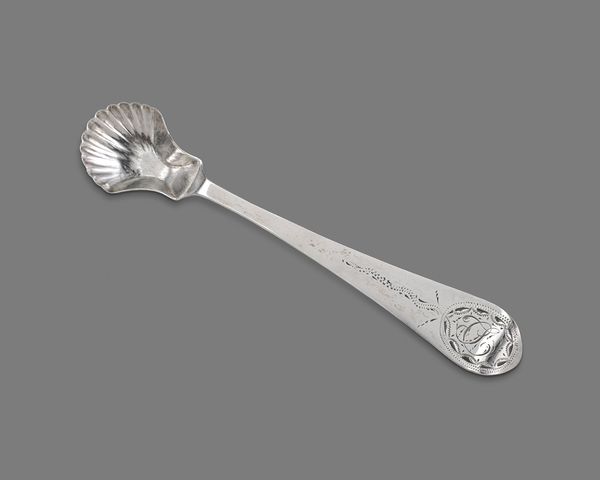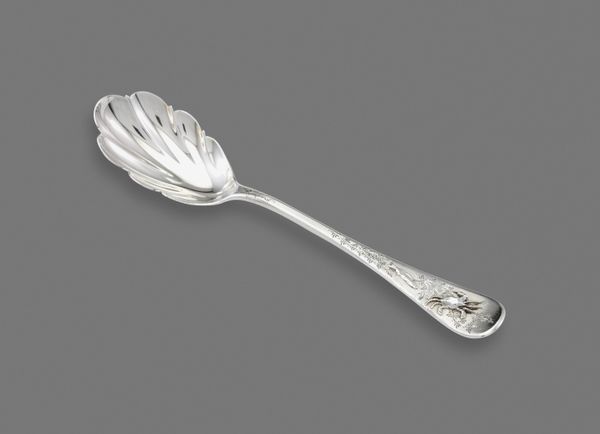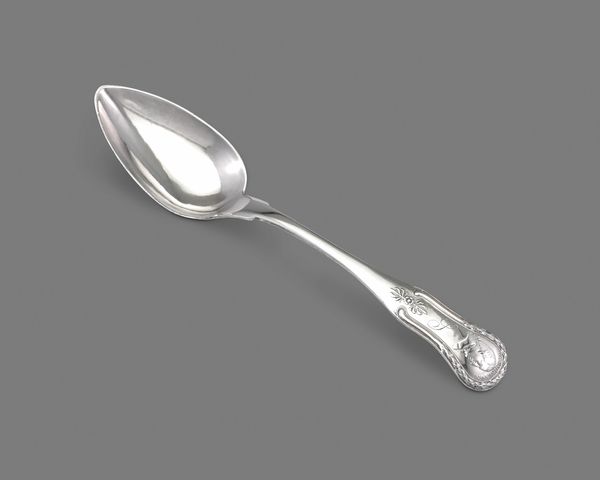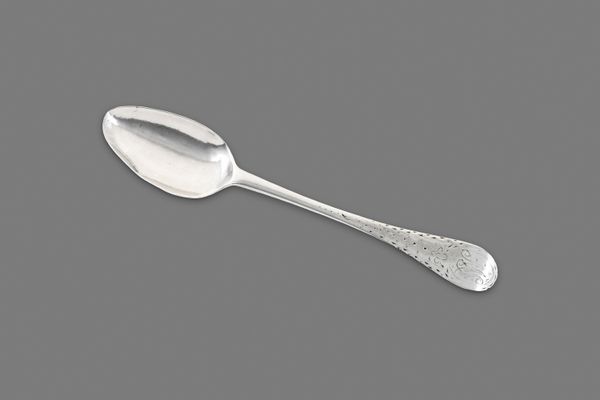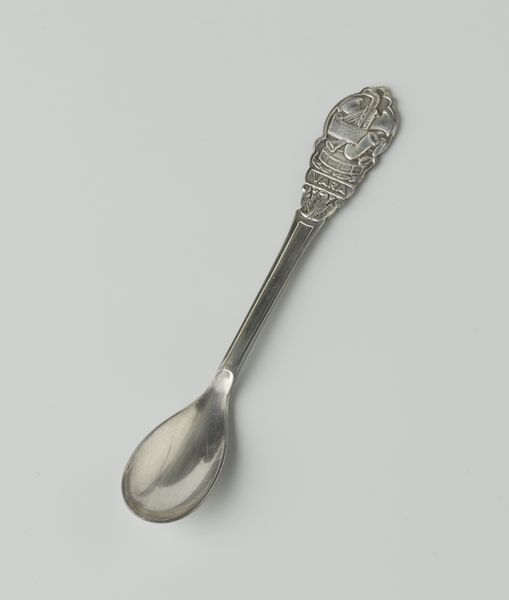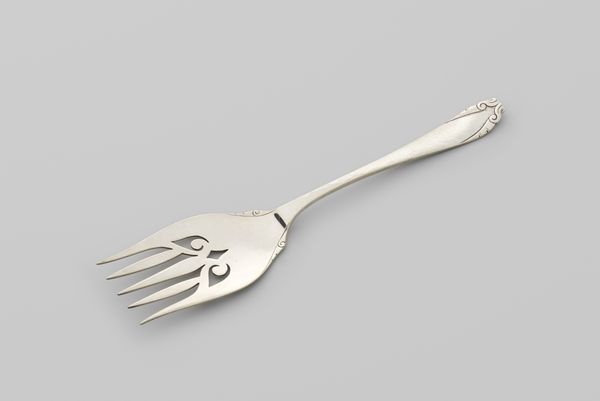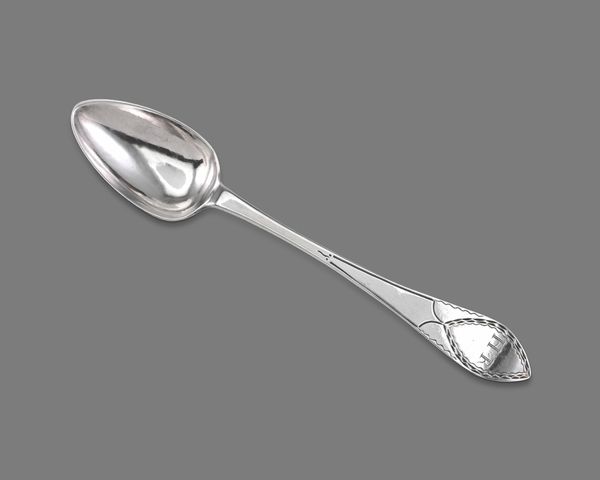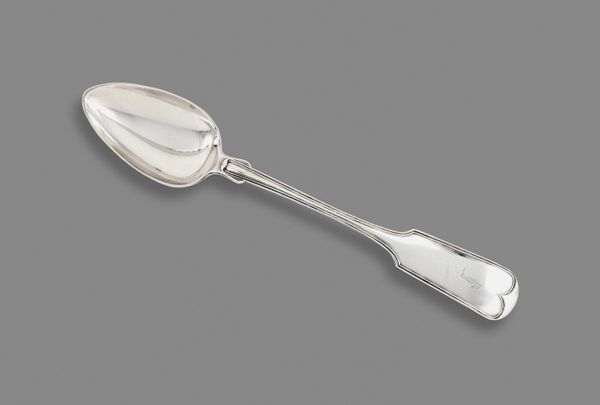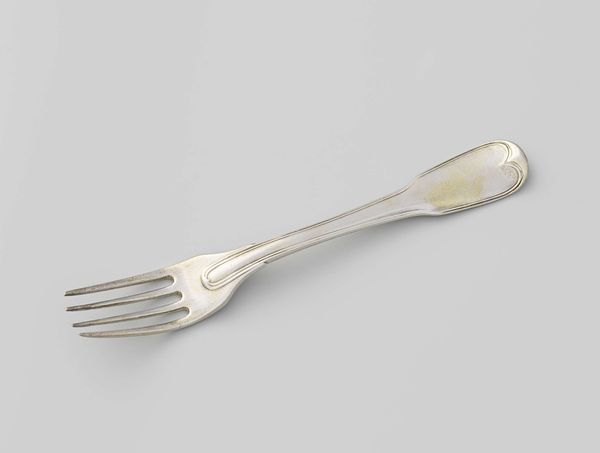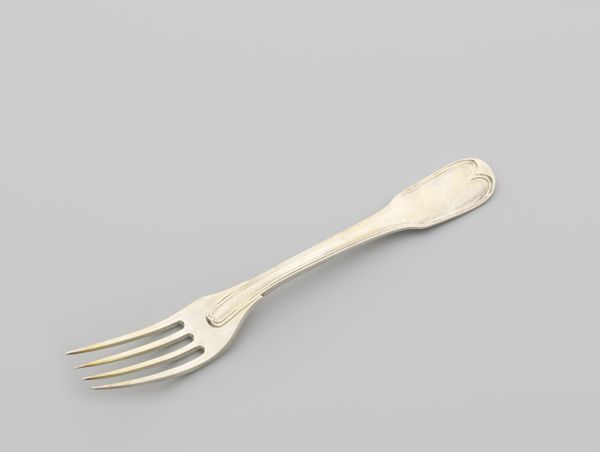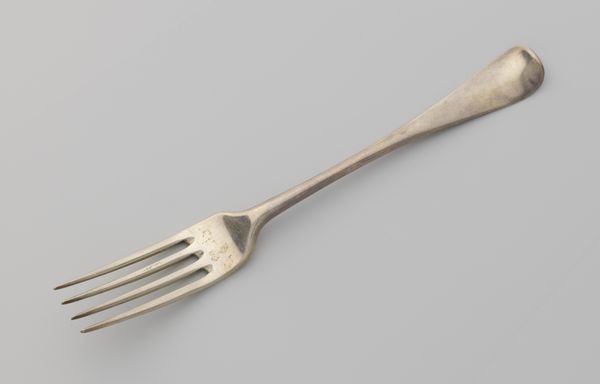
silver, metal
#
silver
#
metal
#
decorative-art
Dimensions: 8.8 cm (3 7/16 in.)
Copyright: Public Domain
Editor: Here we have a "Tea Caddy Spoon," crafted between 1805 and 1806. It's made of silver, a rather elegant object, I think. Its small size and careful craftsmanship give it an air of preciousness. What stands out to you about this piece? Curator: Considering its materiality, let's examine this silver spoon as a product of labor and a component of 19th-century trade. Silver itself signifies access to global resources—consider the mines and the labor extracted to bring this material to a silversmith's workshop. How does viewing this object through that lens alter your perspective? Editor: It makes me think about who owned this and how they acquired the means to own it, beyond just the financial aspect. Were they involved in or benefiting from the systems of extraction you're talking about? Curator: Exactly. Furthermore, the spoon's function, to measure tea from a caddy, speaks to the growing global trade of tea during this period. Think about the labor involved in cultivating, harvesting, and transporting tea from Asia, often under exploitative colonial conditions. This spoon isn’t merely a beautiful object; it represents an entire network of production and consumption. Editor: So, its beauty is almost deceptive, masking these complicated systems. Is the style itself somehow implicated in this? Curator: Absolutely. The decorative art style often served to legitimize and romanticize these networks, concealing the darker aspects of resource extraction and global exchange through displays of luxury. How does knowing all of this affect your initial impression of the spoon's preciousness? Editor: It's still beautiful, but the beauty is now weighed down, or perhaps infused, with historical context. I see it as an artifact of a particular economy, not just a pretty spoon. Curator: Precisely. It serves as a potent reminder to always question the materials, the means of production, and the societal context in which even seemingly simple objects are created and consumed.
Comments
No comments
Be the first to comment and join the conversation on the ultimate creative platform.
